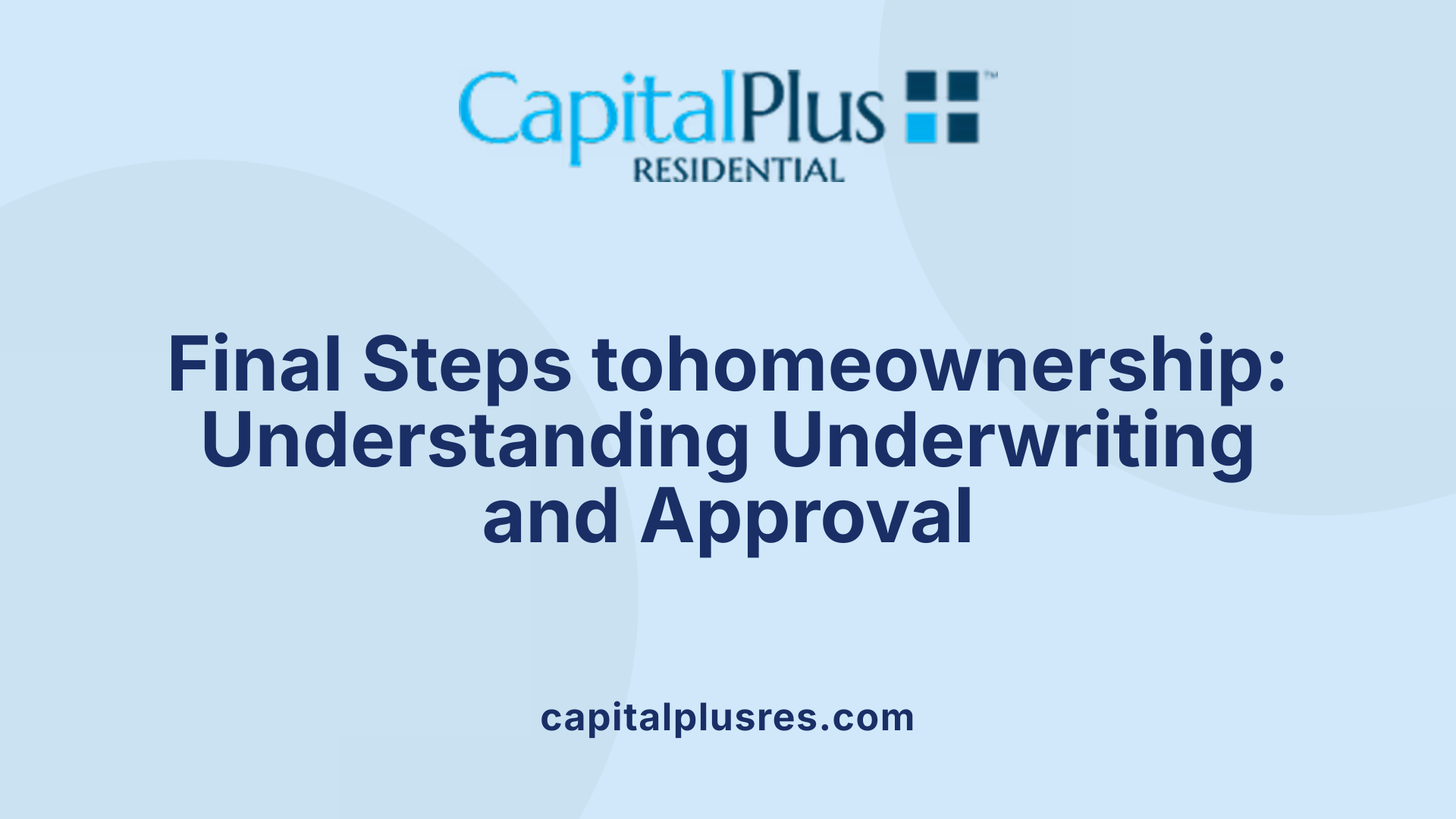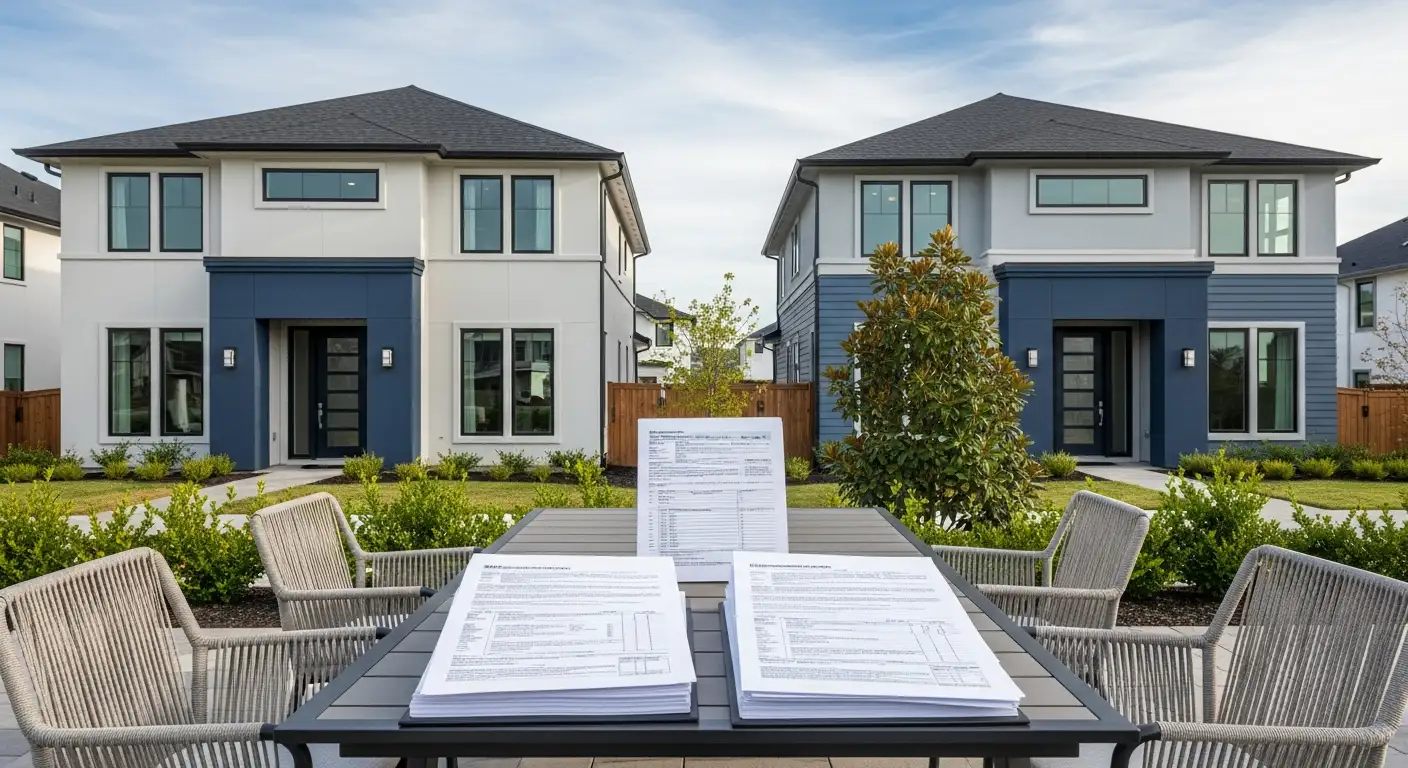Understanding the Mortgage Approval Journey
Securing a residential mortgage is a significant milestone in the homeownership journey. It involves a series of carefully coordinated steps designed to evaluate your financial stability, property value, and readiness to take on a mortgage. From getting pre-approval to the final closing, understanding each stage can help you prepare effectively, avoid surprises, and streamline the process.
Initial Preparation and Pre-Approval

What is the general process for getting approved for a residential mortgage?
The journey toward homeownership begins with a pre-approval, where a lender assesses your financial health by reviewing your credit report, income, assets, and debts. Once you’ve identified a home and your offer is accepted, you'll submit a comprehensive mortgage application. This application requires detailed documentation like pay stubs, bank statements, and tax returns.
Next, the lender verifies your provided information, orders a home appraisal to confirm the property's value matches the sale price, and conducts a title search to ensure no liens are attached. An underwriter then reviews all the information to decide whether to approve, deny, or conditionally approve your loan. If approved, you move toward closing, where you'll sign final documents, pay closing costs, and officially own your home.
Why is preapproval important in the mortgage process?
Preapproval plays a critical role because it proves your financial reliability to sellers and agents. It involves a thorough check of your income, credit, and assets, resulting in a specific maximum loan amount. This step shows you're serious and ready to buy, which can give you an edge in competitive markets.
Unlike prequalification, which is just an estimate, preapproval confirms your borrowing capacity, streamlining your house search to homes within your budget. Additionally, it speeds up the closing process since many financial verifications are completed upfront. Overall, preapproval boosts your confidence, helps you negotiate better, and demonstrates to sellers that you're a committed buyer.
Assessing your finances
Before starting the mortgage application, evaluate your financial health. Check your credit report thoroughly—dispute inaccuracies and aim to improve your score. Gather necessary documents like proof of income, tax returns, bank statements, and identification.
Improving your credit score
A higher credit score can lead to better loan terms. Pay bills on time, reduce existing debts, and avoid opening new credit accounts during the process. Keeping your financial profile stable is essential.
Gathering necessary documents
Compile all required information, including recent pay stubs, bank statements, employment verification, and tax documents. Having these ready can prevent delays.
Getting pre-approved
Apply with a lender by submitting your documents for review. Once approved, you'll receive a pre-approval letter detailing your maximum borrowing amount, interest rate, and loan terms. This letter is valid typically for 60 to 90 days, after which you may need to renew it.
By following these steps, you'll position yourself well for a smooth mortgage process, bringing you closer to owning your dream home.
House Shopping and Making an Offer
 When searching for a home, it’s important to find a property that fits within your budget. Setting clear financial limits helps narrow your options and makes the buying process more manageable.
When searching for a home, it’s important to find a property that fits within your budget. Setting clear financial limits helps narrow your options and makes the buying process more manageable.
Once you find a suitable home, the next step is to make an offer. Usually, this involves putting down earnest money—a deposit typically ranging from 1% to 2% of the purchase price. This deposit shows the seller that you are serious about buying the home and helps secure the deal.
Your offer can include contingencies, which are conditions that must be met before the sale is finalized. Common contingencies are for appraisal and inspection. The appraisal verifies the home's value aligns with the purchase price, ensuring the lender’s collateral is adequate. The inspection checks for any issues with the property, providing an opportunity to negotiate repairs or adjust the price.
The main steps involved in the mortgage application process include obtaining a pre-approval from a lender to understand your borrowing limit. Then, after finding a home and making an offer, you submit a detailed mortgage application with necessary documents such as proof of income, assets, and employment history. The lender reviews your information, orders a property appraisal, and conducts financial and credit evaluations during underwriting. Following this, they grant final approval once all conditions are satisfied.
How making an offer supports the mortgage approval process is significant. It signals your serious intent and often involves earnest money, which can strengthen your position. An accepted offer prompts your lender to proceed with evaluations, order inspections, an appraisal, and a title search. These steps are critical milestones in securing your mortgage approval, bringing you closer to closing.
Overall, approaching house shopping with a clear budget, making a strong offer with earnest money, and including contingencies plays a vital role in moving smoothly toward homeownership.
Property Appraisal, Inspection, and Title Search
 When proceeding with a mortgage, several important inspections and evaluations must occur to ensure the property’s value and ownership status are solid. One of the first steps is a home appraisal, ordered early in the process by the lender. This appraisal verifies that the property's current market value aligns with the agreed purchase price. If the appraisal is lower than expected, buyers may need to negotiate a new price or make additional payments.
When proceeding with a mortgage, several important inspections and evaluations must occur to ensure the property’s value and ownership status are solid. One of the first steps is a home appraisal, ordered early in the process by the lender. This appraisal verifies that the property's current market value aligns with the agreed purchase price. If the appraisal is lower than expected, buyers may need to negotiate a new price or make additional payments.
Alongside an appraisal, scheduling a home inspection is highly recommended, especially for existing homes. This inspection identifies issues such as structural problems, roofing quality, or plumbing concerns that could affect the property's safety or value. Knowing the condition of the home upfront allows buyers to negotiate repairs or purchase price adjustments, potentially saving money and avoiding surprises after closing.
Another critical milestone is a title search, conducted to confirm that the seller has clear ownership of the property and that no liens or claims are attached. This search uncovers any legal issues or debts that could hinder ownership transfer. Ensuring a clear title is essential before finalizing the purchase, as it protects the buyer from future legal disputes over ownership rights.
| Milestone | Purpose | Notes |
|---|---|---|
| Home appraisal | Confirm the property’s market value | Needed to support loan amount and meet lender requirements |
| Home inspection | Identify any structural or system issues | Helps negotiate repairs or price adjustments |
| Title search | Verify clear ownership and absence of liens | Protects against future legal claims |
Understanding these steps underscores their importance in safeguarding your investment and facilitating a smooth mortgage approval process. Each milestone ensures the property is worth the loan amount, in good condition, and legally owned by the seller. Addressing issues early helps prevent delays at closing and confirms that all legal and valuation criteria are met for a successful home purchase.
Final Underwriting and Approval
 The final stage of the mortgage process is the underwriting review, which is critical in ensuring all financial and property details align with the lender's requirements.
The final stage of the mortgage process is the underwriting review, which is critical in ensuring all financial and property details align with the lender's requirements.
During this phase, the underwriter examines all submitted documentation thoroughly. This includes verifying income through pay stubs, tax returns, and employment verification. They also review bank statements and asset documentation to confirm financial stability. The property's valuation is reassessed via the appraisal to ensure its market value matches the purchase price and collateral appraisals are satisfactory.
A key part of underwriting is evaluating your credit history and debt levels, ensuring your debt-to-income ratio remains within acceptable limits. The underwriter also confirms there are no outstanding liens via a title search and that you have suitable homeowner’s insurance in place.
Once all information is validated, the underwriter considers whether to approve, deny, or conditionally approve your application. Conditional approval means that specific requirements or conditions need to be fulfilled before finalizing the mortgage.
Conditions might include providing additional documentation, such as updated bank statements or clarification on debts. Meeting these conditions is essential for moving forward.
When all conditions are satisfied, the underwriter issues a "Clear to Close" status. This indicates your application is approved, and the loan is ready for funding.
Throughout this process, effective communication with your lender is vital. Respond promptly to any requests for additional information or documentation to avoid delays.
This detailed review concludes with the final approval and sets the stage for the closing, where you will sign final documents, pay closing costs, and officially take ownership of your new home.
Closing and Final Steps

What documentation is usually required for a mortgage application?
Applying for a mortgage involves submitting detailed financial and personal documents to prove creditworthiness and ability to repay the loan. Typically, lenders ask for proof of income, such as recent pay stubs, W-2 forms from the last two years, and tax returns — especially for self-employed individuals, who may need to provide additional profit and loss statements. Borrowers must also present recent bank statements covering the last two to three months to verify assets and cash reserves.
Identification is crucial; therefore, government-issued IDs and Social Security numbers are required. Additional documents might include employment verification letters, proof of rent payments or rental history, gift letters if funds are gifted, and relevant legal records like divorce decrees or bankruptcy filings. For the property, a ratified sales contract and proof of homeowner’s insurance are commonly necessary. Collecting and organizing these documents ahead of time ensures a smoother approval process.
| Document Type | Purpose | Additional Details |
|---|---|---|
| Income proof | To confirm the borrower’s earning capacity | Pay stubs, W-2s, tax returns (especially for self-employed) |
| Asset documentation | To verify cash reserves and assets | Bank statements from last 2-3 months |
| Identification | To verify borrower’s identity | Driver’s license, passport |
| Employment verification | To confirm ongoing employment status | Employer confirmation letter, recent paystubs |
| Property and legal documents | To ensure the property’s legality and insurability | Sales contract, homeowner’s insurance proof, legal records |
What are the final requirements at closing and how do borrowers prepare?
On closing day, borrowers must be prepared to review and sign a variety of legal documents, pay closing costs, and verify that all prior conditions are met. It’s essential to go over the Closing Disclosure thoroughly before arriving to understand the final loan details, including interest rate, loan amount, and payment terms.
Paying closing costs involves bringing a cashier’s check or making a wire transfer for the necessary amount, which usually covers the down payment, closing fees, and other expenses. Confirming these amounts in advance helps prevent delays.
At the appointment, borrowers should bring a valid photo ID and the funds needed for closing. Carefully reviewing all documents before signing is vital; don’t hesitate to ask questions or clarify terms with the closing agent or attorney.
Once all signatures are completed and the funds are transferred, ownership of the property is officially transferred to the buyer. The keys are handed over, marking the culmination of the mortgage process and the beginning of homeownership.
| Final Step | What to Do | Tips |
|---|---|---|
| Review documents | Read thoroughly, ask questions, ensure figures match previous estimates | Don’t rush; understand every document before signing |
| Make payment | Pay closing costs via cashier’s check or wire transfer | Confirm amounts in advance |
| Sign legal documents | Sign the mortgage agreement, title transfer, and other legal paperwork | Bring valid ID and funds |
| Transfer ownership | Receive the keys and official ownership transfer | Verify you have all necessary documents and keys |
What should potential borrowers do to prepare for the mortgage approval process?
Preparation starts long before the application process. Interested buyers should review and improve their credit report and score, disputing errors and paying down debts to boost approval chances. Gathering essential financial documents ahead of time, such as tax returns, pay stubs, bank statements, and proof of assets, streamlines the process.
Obtaining a pre-approval from a lender is highly recommended. A pre-approval letter clarifies your borrowing capacity, helps set a realistic budget, and signals seriousness to sellers. It involves a thorough review of credit and financial information.
Research different loan options and compare rates among lenders to find the best terms. Understanding the details, like loan-to-value ratios, interest types, and repayment options, will guide your decision.
Building savings for your down payment and closing costs is also crucial. Familiarize yourself with the factors influencing mortgage approval, including debt-to-income ratios, employment stability, and property appraisal values.
Doing all this work upfront reduces surprises and supports a smoother journey from house hunting to closing.
| Preparation Step | Action | Benefits |
|---|---|---|
| Credit report review | Check for errors, pay down debts | Improves credit score and approval odds |
| Gather documents | Collect tax returns, pay stubs, bank statements, legal papers | Facilitates quick application processing |
| Get pre-approved | Submit financial info for loan pre-approval | Clarifies borrowing capacity, strengthens offers |
| Research loan options | Compare rates and terms among lenders | Secures favorable loan conditions |
| Save for costs | Build funds for down payment and closing costs | Reduces last-minute financial stress |
By following these steps, borrowers enhance their readiness, making the mortgage approval process as smooth as possible.
Navigating Your Homeownership Goals
Understanding the detailed steps involved in obtaining a mortgage—from pre-approval, house shopping, documentation, inspections, underwriting, to closing—can significantly enhance your confidence and preparedness. Staying organized, maintaining financial stability, and communicating effectively with your lender throughout the process are vital. By following these comprehensive steps, prospective homebuyers can ensure a smoother journey toward owning their dream home.
References
- Your 10-Step Guide to the Mortgage Loan Process
- The Mortgage Process, Explained
- How to apply for a mortgage in 5 steps
- 6-Step Guide to Navigating the Mortgage Approval Process
- 9 Steps Of The Mortgage Process | From Preapproval To ...
- The Mortgage Pre-Approval Process Explained
- Tips Before Applying for a Mortgage
Latest Blog


Get Pre-Approved Today
Start your secure online application now so you can get pre-approved for a mortgage (and close on your dream home) quickly within 5 minutes.









